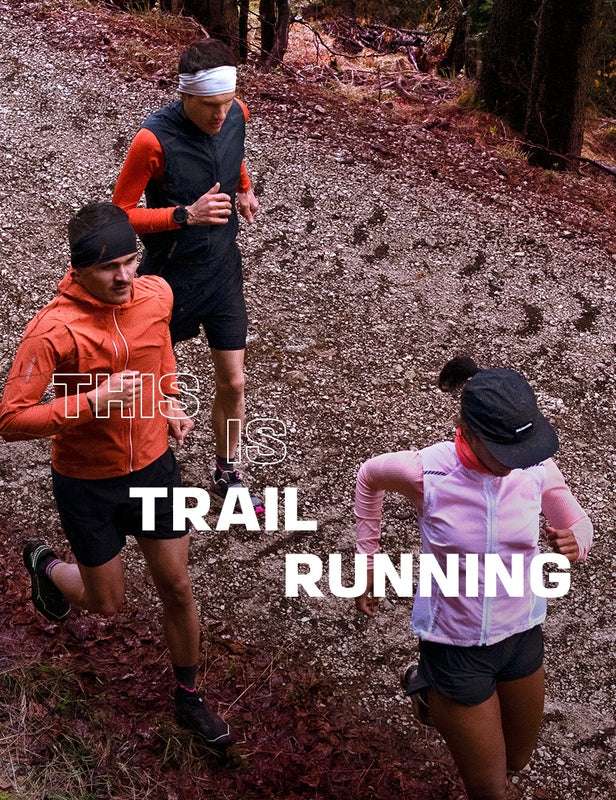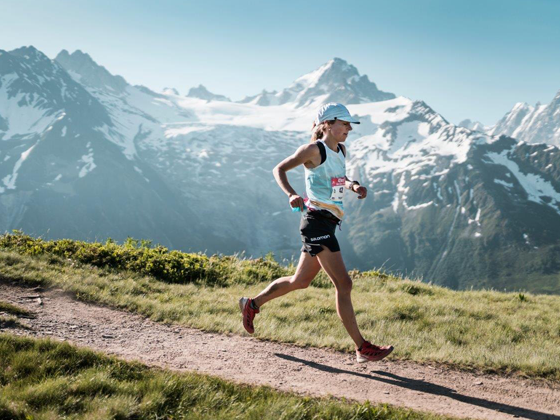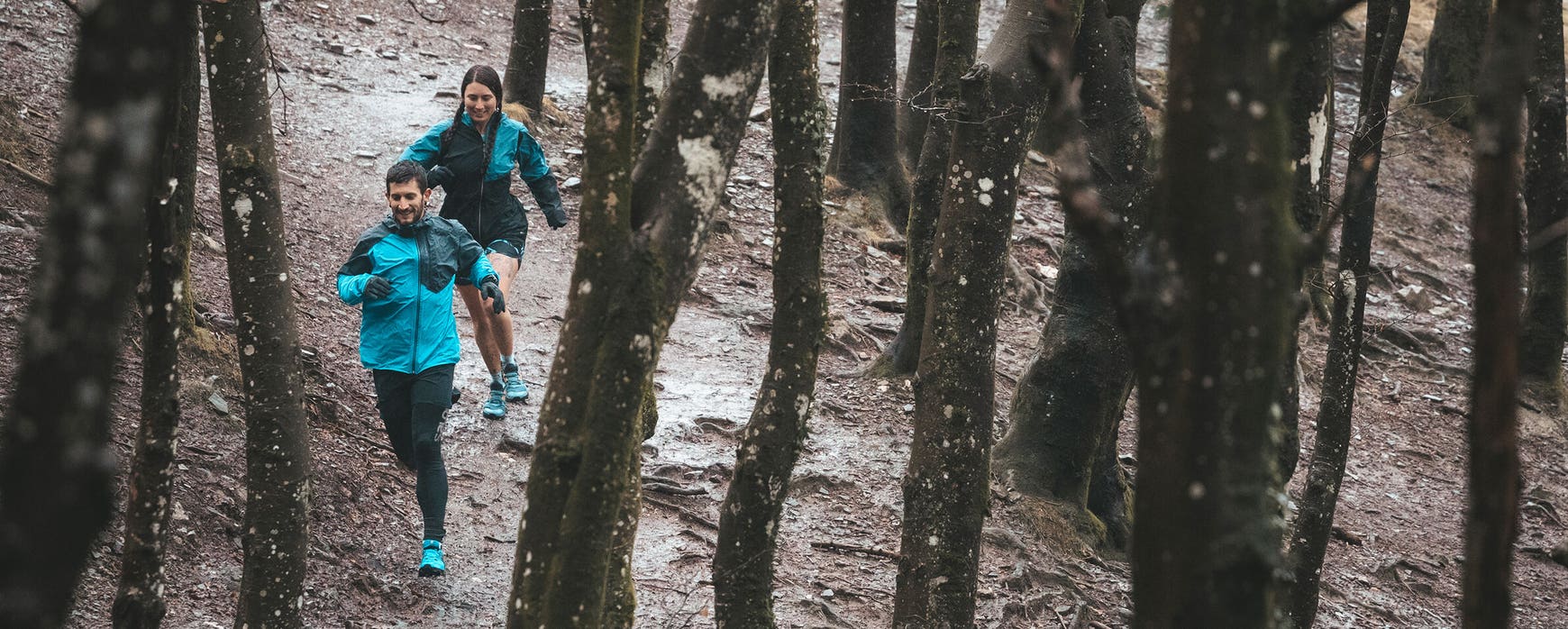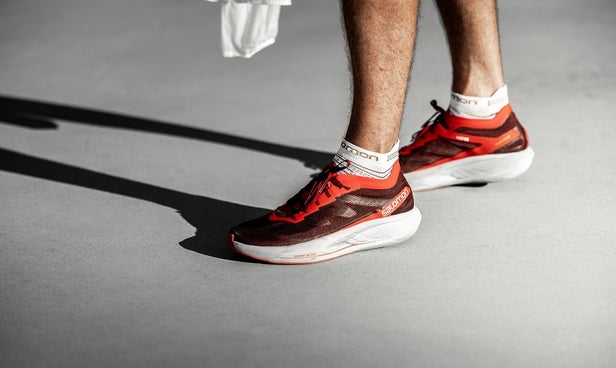Running outside in any type of weather not only requires a good dose of motivation but also the right clothing. Follow our suggestions to be comfortable whatever the season and you won’t need an entire room to store your running gear.
TECHNICAL CLOTHING THAT WILL KEEP YOU DRY
With its many disciplines running means different things to different people, which is why it’s important to choose your clothing wisely to make sure you’re as comfortable as possible. And while the clothing possibilities seem endless there are a few basic principles you should always follow:
Just say no to cotton
Even though it’s one of the most popular fabrics in everyday life, cotton is the material to avoid for running (and most other high-intensity sports). Cotton absorbs and retains water whether it’s from rain or your own sweat. Because of this, cotton clothing holds moisture against your skin which results in a cold, unpleasant feeling. On top of that, waterlogged cotton is also heavy, it causes friction, and it promotes the proliferation of bacteria in sensitive areas.
Wear technical clothing
When we speak about technical clothing, we mean garments that are developed and conceived specifically for your sport and with the goal of maintaining your ideal body temperature while you’re moving. They’re generally made from a synthetic, hydrophobic material (e.g. polyester) that doesn’t absorb moisture and dries very quickly. The addition of elastane makes the fabric stretchy and therefore very comfortable (the famous stretch effect).
A technical garment must be breathable to allow perspiration to escape, and it should also feature additional technologies that will protect you from the cold, wind and rain when necessary.
A technical garment for running should feature a cut that’s tailored to your movements and any seams will be strategically placed so they won’t cause any kind of discomfort.
Running in quality technical clothing means staying dry and comfortable for maximum enjoyment!
Dress in layers
Whatever outdoor sport you’re into you should always use the three-layer system. This system adapts efficiently to a wide range of weather conditions without any unnecessary layers:
- Base layer against the skin to wick away perspiration
- Midlayer to protect against cold if necessary
- Outer layer to protect against outside elements like wind, rain and snow.
How to properly dress in layers with the three-layer system


MAKE YOUR CLOTHING CHOICE BASED ON THE WEATHER
Running is an intense sport and while you’re doing it your body produces a lot of heat. That’s why we recommend choosing clothing that you’d wear if it was 10˚C (18˚F) warmer than the current outside temperature. This way you won’t find out you’re overdressed after just a few kilometers!
To put together you’re running ‘fit, take the following into account: the discipline practiced and the intensity (minimal clothing for road running, additional protection for trail). The duration and support: for long distances or trails that require more commitment, you need to ensure your safety, comfort, fuel, hydration and take any extra gear that might be needed. Take a deeper dive: What equipment do you need for trail running? Weather conditions, climate: perhaps the most important criteria for making the final decision on your running gear.

@CedricCorroy
Here are three suggestions for what to wear on a run depending on the weather:
Running when it's hot and dry
This is your basic combo for running in summer and enjoying beautiful days in the sun.
- Upper body: a technical T-shirt or tank top is enough and will protect your skin from direct exposure to the sun's rays. Choose light colors.
How to choose the best sports bra
Remember to wear a cap or visor to protect your head from the sun. At altitude sudden, unexpected drops in temperature can happen, even in summer. So on long outings – when you’re trail running in the mountains, for example – throw a lightweight beanie in your pack, or at the very least, a thin headband.
- Lower body: shorts or compression shorts are fine but choose them carefully.


Running in wet, unstable or rainy weather
The weather’s not ideal or it’s likely to get worse? No problem! With one or two extra pieces of clothing you’ll be ready for anything.
- Upper body: add a running jacket. Find our advice on how to make the best choice: How to choose a running jacket.
- Lower body: a pair of shorts will usually be enough when the temperature gets down to about 0-5˚C (32-41˚F) because your legs are less sensitive to cold and wet.
Running in winter or when it's really cold
- Protect your extremities from the cold: imperative in winter!
We lose 60 to 70% of our body heat through our extremities (head, ears, neck, hands, feet) about half of which is lost through our head alone. When you go running in the cold of winter, our first recommendation for conserving body heat is to protect your extremities.
A beanie, headband or neck gaiter should be chosen depending on how cold it is and the intensity of your effort. Gloves, even thin ones, will keep your fingers warm and also protect your hands in case of a tumble. Be careful: wearing thicker socks (how about in merino wool?) will only be effective if your shoes are not too tight. Therefore, shoes a half size larger are sometimes necessary for running in very cold weather. And don’t forget the possibility of adding overshoes or gaiters.
- Upper body: use the three-layer system when it’s very cold or the if wind is blowing hard enough to lower your body temperature. Your usual base layer might suffice but don’t hesitate to replace it with a slightly warmer long-sleeved shirt if necessary. As for a midlayer, a thin fleece is usually enough when you’re running. For the outer layer, a windproof or waterproof jacket works well for cold conditions.
Remember to always have a warm jacket handy when you stop moving because that’s when your body will quickly cool down.
- Lower body: switch to long tights when your shorts or compression shorts do not provide enough protection, especially in the snow.
Because winter days are so short, we often find ourselves running at night. In addition to your headlamp, reflective details on your clothing will help drivers see you better.
As you can see, having the right running clothes is the best way to stay comfortable when you’re running in all kinds of weather. So rather than choosing your clothing based on what’s on sale, we recommend investing in a few pieces that will truly make a difference in the way you feel. Sometimes, the motivation to run at night can even come from an awesome outfit that you love to wear!




